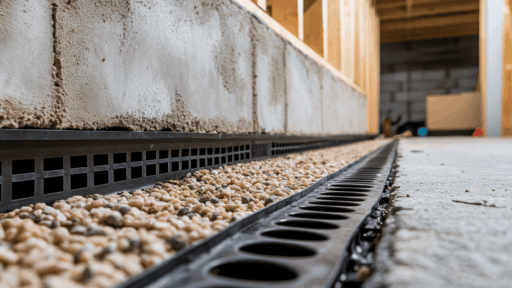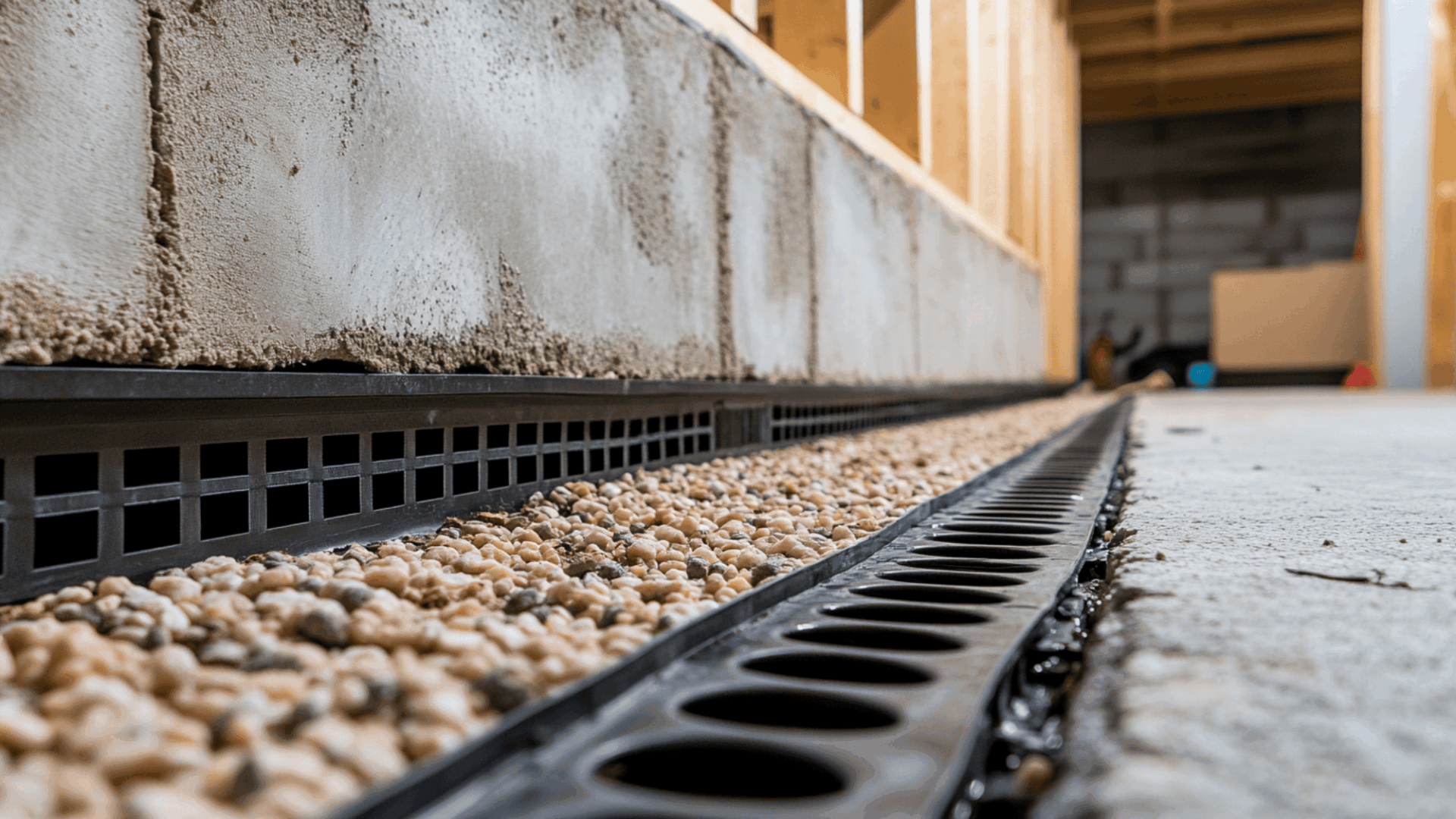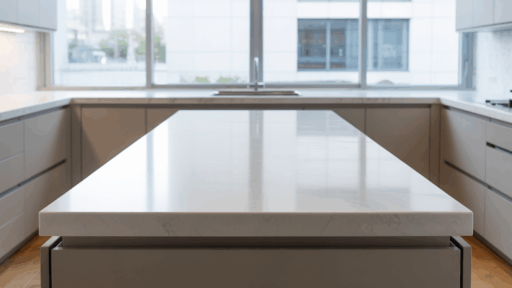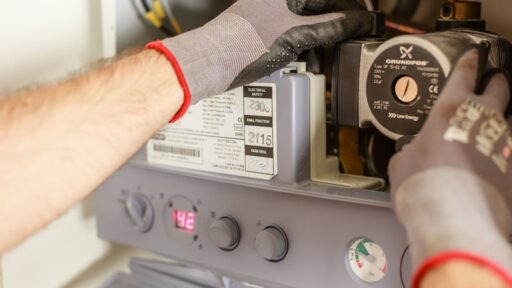Got water creeping into your basement? An interior drain tile system might be the answer.
It sounds fancy, but it’s really a smart, hidden way to keep your basement dry and your foundation safe. Despite the name, there’s no ceramic tile involved.
Instead, this system utilizes perforated plastic pipes, gravel, and a sump pump to collect water beneath your floor and transport it away before it becomes a problem.
This article will walk you through exactly what interior drain tile systems are, how they work, what’s involved in installing one, and why so many homeowners swear by them for long-term waterproofing.
Let’s get going with everything you need to know, without getting your feet wet.
What Is an Interior Drain Tile System?
Interior drain tile systems use perforated pipes buried beneath your basement floor to collect excess water. Despite the name “tile,” these modern systems use plastic pipes rather than the clay tiles used decades ago.
The system works by creating a path for groundwater to flow into collection pipes instead of seeping through foundation walls or floors.
Once collected, a sump pump removes the water from your basement and sends it far away from your home. These systems address the root cause of basement water problems: hydrostatic pressure.
When soil around your foundation becomes saturated with water, it creates pressure that forces moisture through even the smallest cracks and gaps.
How Interior Drain Tile Systems Work
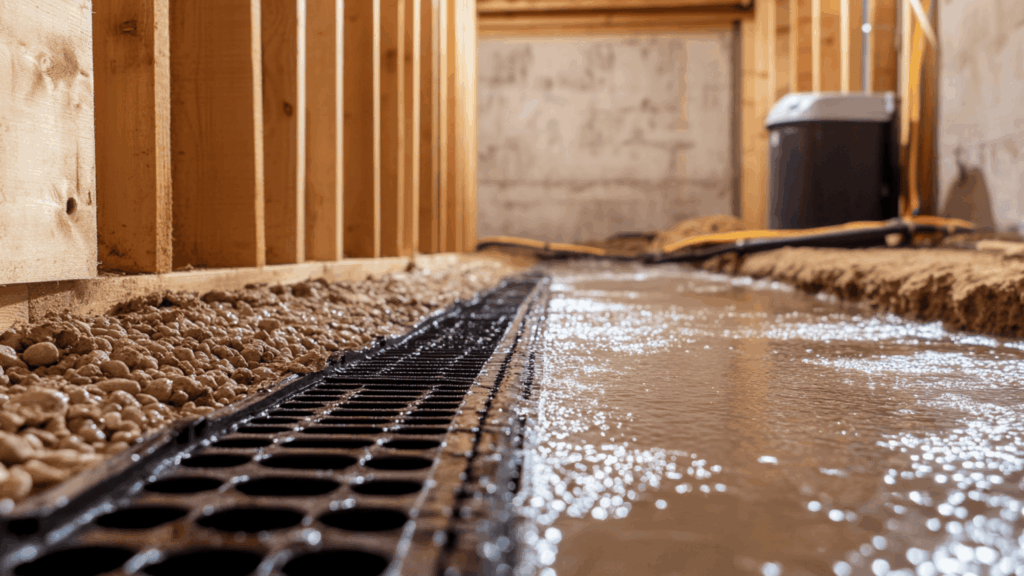
The process starts when water accumulates in the soil around your foundation. Rain, snowmelt, and rising groundwater all contribute to this accumulation of moisture.
Instead of letting this water pressure build against your foundation walls, the drain tile system gives it an easier path.
Perforated pipes placed beside your foundation footing collect water as it flows through the surrounding gravel bed. The pipes slope downward toward a sump pit, where water accumulates until it reaches a certain level.
At that point, your sump pump activates and pushes the water through discharge lines that carry it at least 20 feet away from your home.
This continuous cycle prevents water from building up around your foundation and eliminates the pressure that causes basement leaks.
Components of an Interior Drain Tile System
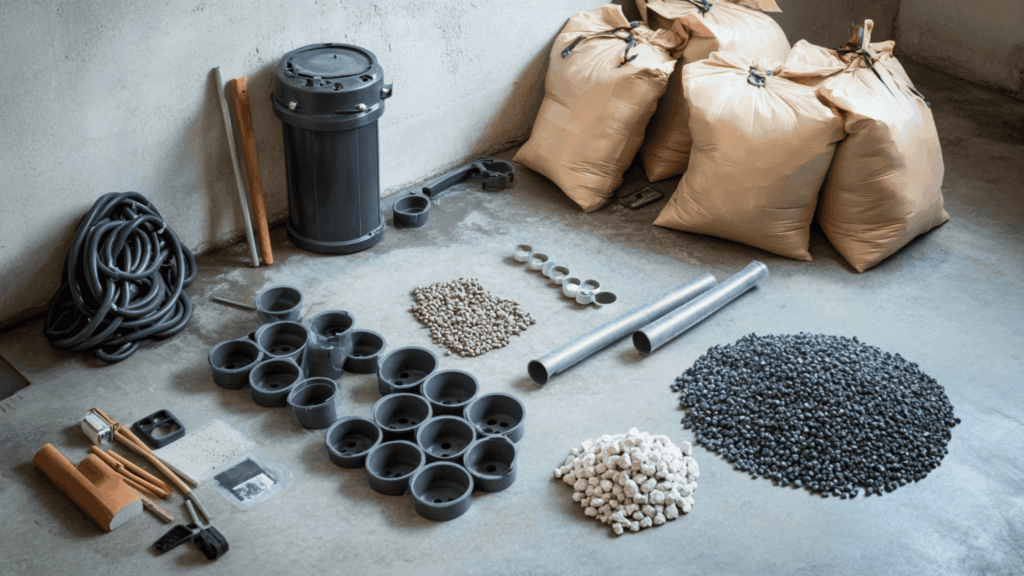
The process starts when water accumulates in the soil around your foundation. Rain, snowmelt, and rising groundwater all contribute to this accumulation of moisture.
Instead of letting this water pressure build against your foundation walls, the drain tile system gives it an easier path using these essential components:
1. Perforated PVC or Flexible Corrugated Pipe: This serves as the central collection system. These pipes feature holes that allow groundwater to enter while maintaining structural integrity to handle the weight of concrete and gravel above.
2. Gravel or drainage rock: Surrounds the pipes to create a filtration bed. This washed stone prevents debris from entering the system while allowing water to flow freely toward the collection pipes.
3. A drainage mat or vapor barrier: Directs moisture into the drainage system rather than allowing it to evaporate into your basement air. These materials help control humidity levels and prevent moisture from reaching the basement walls.
4. The sump pit and sump pump: Collect water from the drainage pipes and remove it from your basement. The pit provides a collection point where water accumulates until it reaches activation levels for the pump system.
5. Battery backup for the pump (Optional): Ensures continued operation during power outages, when basement flooding risks are often highest. This backup system provides peace of mind during storms and electrical failures.
This continuous cycle prevents water from building up around your foundation and eliminates the pressure that causes basement leaks.
Benefits of Interior Drain Tile Systems
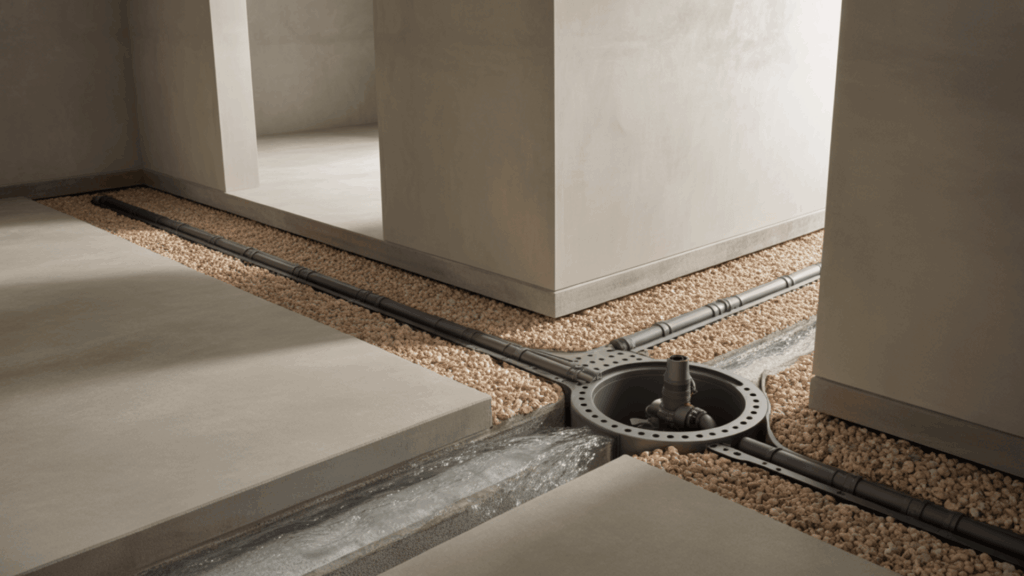
Installing a quality interior drain tile system provides multiple advantages for homeowners.
1. Prevents Basement Flooding and Mold Growth
The system controls groundwater before it enters your basement, protecting flooring, walls, furniture, and stored belongings from moisture damage.
By eliminating excess humidity it prevents the development of mold and mildew, which can cause serious health problems and incur expensive remediation costs.
2. Permanent Waterproofing Solution
Interior drain tile systems operate continuously for decades, providing lasting protection with minimal maintenance requirements.
Unlike temporary fixes or surface treatments, these systems address the root cause of water problems and continue working year after year.
3. Works Well with Finished Basements
Installation can be completed without major disruption to existing rooms since the system operates invisibly beneath your floor.
You can maintain or create living spaces without compromising your basement’s appearance or functionality by avoiding visible drainage equipment.
4. Can Increase Home Resale Value
Professional waterproofing systems provide buyers with confidence in basement conditions, helping homes command higher prices and sell faster than properties with known water issues.
Transferable warranties add additional value that buyers appreciate.
5. Often Less Expensive Than Exterior Systems
Interior installation requires less excavation, shorter work timelines, and minimal disruption to landscaping or hardscaping around your home.
This makes it a cost-effective solution that delivers comparable or superior performance to more expensive exterior alternatives.
Types of Interior Drain Tile Installation
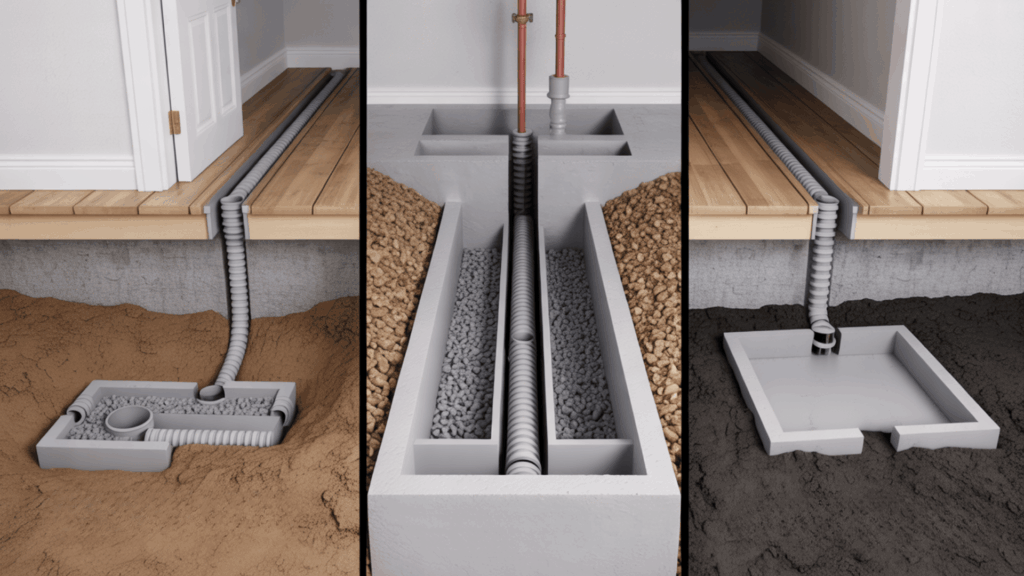
Three main installation methods exist for interior drain tile systems, each with different performance characteristics.
1. Above the Concrete Floor: This surface-level approach, sometimes called a “beaver system,” places drainage channels on top of your existing basement floor.
While less invasive, this method cannot address hydrostatic pressure from below and creates an unsightly raised system along your walls.
2. At the Footing Level: This method places pipes directly on top of your foundation footing after removing concrete flooring.
However, pipes sitting flat on the footing often have drainage issues because water can become trapped in low spots.
3. Besides the Footing: The most effective approach places pipes in a trench dug beside your foundation footing. This position allows optimal drainage slope and provides the best relief from hydrostatic pressure.
This method requires more excavation work but delivers superior long-term performance. Water flows over the footing, below your basement floor, and directly into the drainage system.
Choosing the Right Materials for Drain Tile Systems
The pipes used in your drain tile system have a significant impact on its long-term effectiveness.
Corrugated Pipe Limitations
Many older systems used corrugated plastic pipes with slits for water entry. These pipes create several problems:
- Mineral deposits clog the narrow slits over time
- The flexible material makes it challenging to maintain a proper drainage slope
- Water pools in the corrugated ridges, reducing flow capacity
- The pipes often sag under the weight of concrete and gravel
Rigid PVC Advantages
Modern systems use rigid PVC pipes with larger holes that resist clogging. The smooth interior surface allows water to flow freely, while the rigid construction maintains proper slope over time.
Quality PVC drain tile systems use 3-inch diameter pipes with holes large enough that sediment cannot block them.
The pipes sit in a bed of washed gravel that acts as a natural filter, preventing debris from entering the system.
Installation Process for Interior Drain Tile Systems
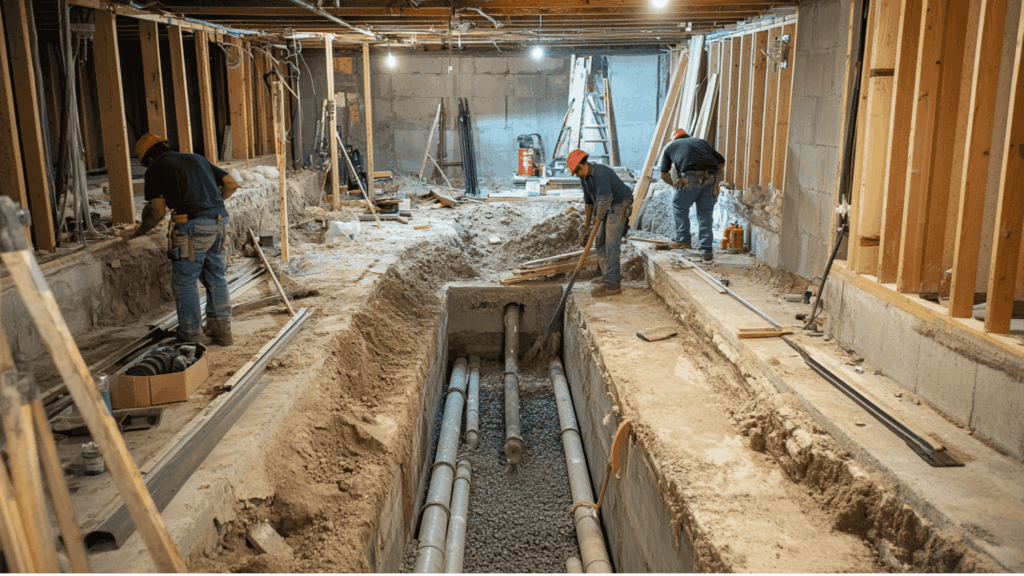
Installing an interior drain tile system requires careful planning and professional execution.
The process begins with marking utility lines and preparing your basement for construction. Workers then cut and remove a strip of concrete flooring around the perimeter of your basement.
Next, they dig a trench beside your foundation footing to the proper depth and slope. The trench must maintain a consistent downward grade toward the sump pit location.
Workers then place the PVC pipes in the trench and surround them with washed gravel. This gravel bed provides filtration and support while allowing water to flow freely into the pipes.
After connecting all pipes to the sump pit, workers replace the concrete flooring. Modern concrete mixes cure quickly, allowing for normal basement use within a few days.
Maintenance Requirements for Drain Tile System
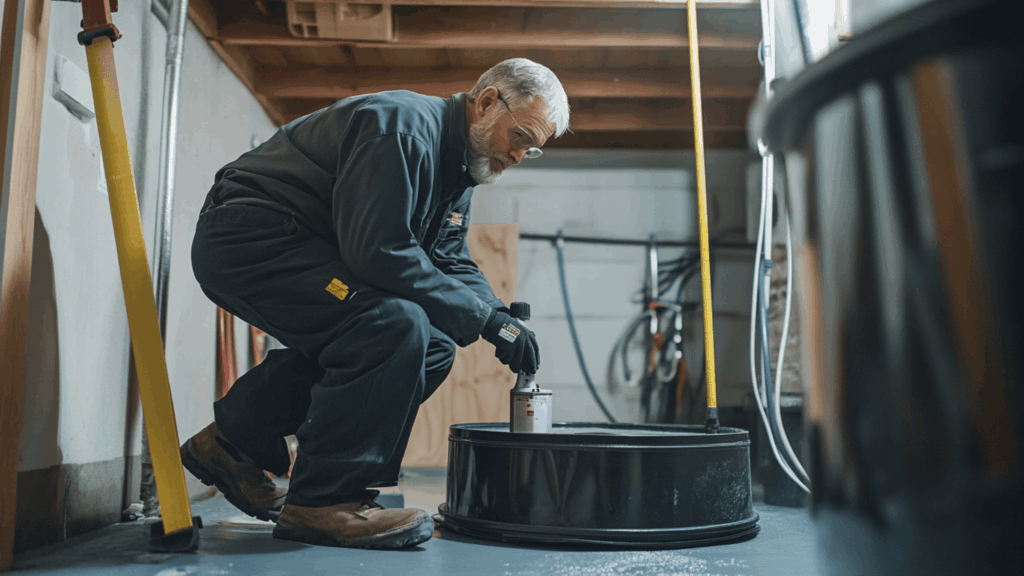
Interior drain tile systems require minimal maintenance when properly installed:
- Annual sump pump testing ensures your system will work when needed most.
- Check pump activation by pouring water into the sump pit to verify proper operation.
- Listen for unusual noises that might indicate mechanical problems requiring attention.
- Test the battery backup system, if installed, to ensure emergency protection.
- Keep discharge lines clear of debris, ice, and vegetation that could block water flow.
- Monitor for blocked discharge lines since they can cause pumps to work harder or fail.
Most quality systems include warranties that cover both materials and workmanship, making proper maintenance even more important for long-term protection.
Interior vs. Exterior Drain Tile Systems
Both interior and exterior drain tile systems serve the same basic purpose, but they work in different locations and offer distinct advantages.
| FEATURE | INTERIOR SYSTEMS | EXTERIOR SYSTEMS |
|---|---|---|
| Location | Inside the basement perimeter | Outside at the foundation level |
| Installation Time | Few days | Several weeks |
| Cost | Lower | Higher |
| Disruption | Minimal interior work | Major excavation required |
| Best For | Finished basements | New construction |
Most homeowners choose interior systems because they cost less to install, work year-round regardless of weather, and provide easier access for future maintenance.
Interior systems also work better for homes with finished basements or extensive landscaping that owners want to preserve.
How Do You Know If You May Need Interior Drain Tile?
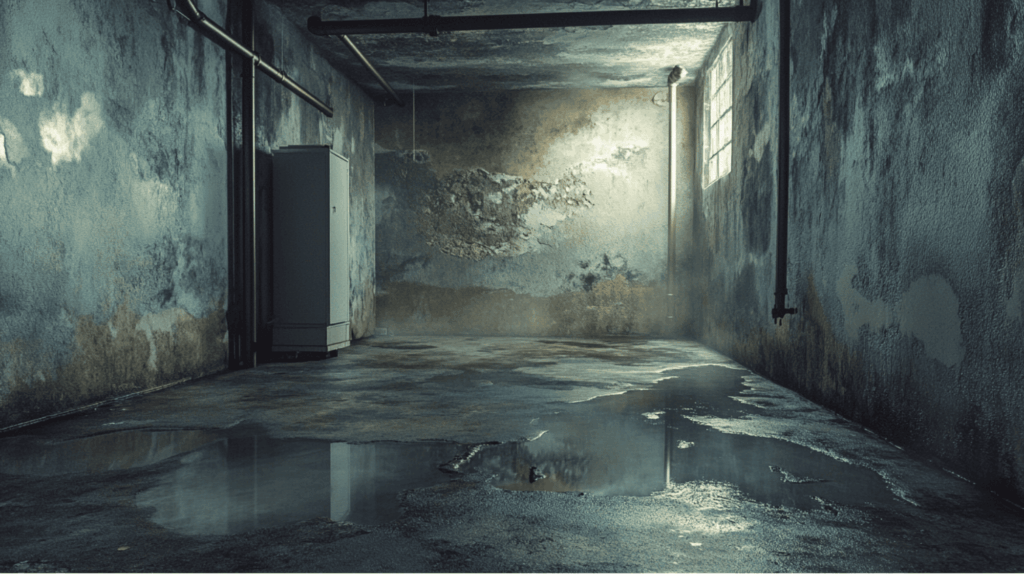
Several warning signs indicate that your basement could benefit from an interior drainage system:
- Water stains along basement walls: It suggests previous flooding or ongoing seepage. Even small amounts of moisture can cause these stains and indicate bigger problems ahead.
- Musty odors: It often develop when humidity levels stay too high for extended periods. This smell typically comes from mold or mildew growth in hidden areas.
- White mineral deposits on basement walls: They form as a result of water evaporation, leaving behind dissolved minerals. These deposits show that water regularly moves through your foundation materials.
- Standing water or damp spots: It obviously indicates immediate drainage problems that will likely worsen without professional intervention.
- High humidity readings above 60%: It creates conditions that support mold growth and can damage stored items, even without visible water problems.
Final Thoughts
Basement leaks don’t fix themselves, and waiting only makes problems worse.
An interior drain tile system is one of the most effective ways to handle groundwater before it seeps into your home.
It protects your foundation, your air quality, and everything stored below ground.
From installation to upkeep, this innovative waterproofing solution is reliable and often more affordable, especially when compared to exterior systems.
If you’ve spotted water stains, damp walls, or high humidity, don’t wait until the next storm hits.
Would you like to share your experience or have a question about your basement setup?
Drop a comment below, we’d love to hear from you!

